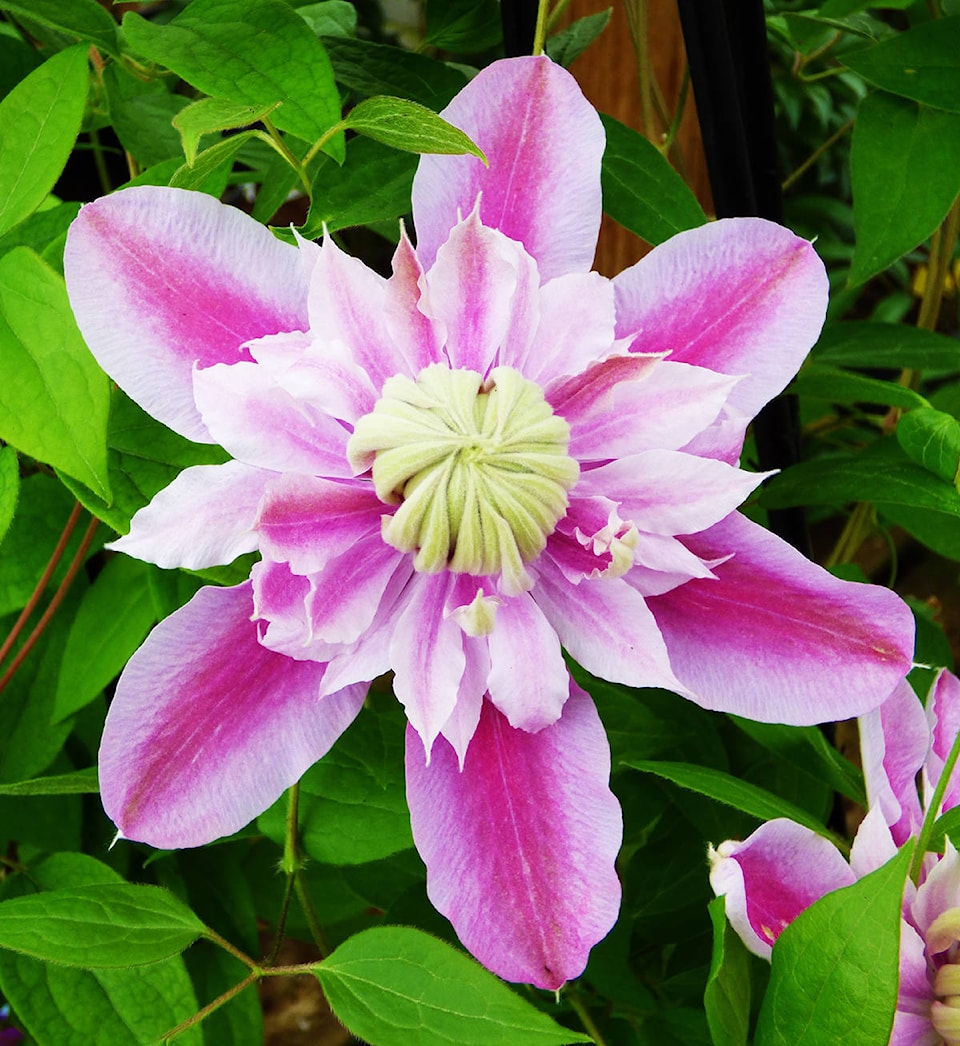People often ask me where I get my inspiration for garden articles and if it’s hard coming up with new ideas to write about.
The truth is that I have no problem writing about things that interest me and quite often, new inspiration comes from a reader’s request or simple happenstance.
Take this article for instance: it was sparked by a nest of baby sparrows thriving in the midst of an Osteospermum planter and the wonderfully cheerful blooms of the Evison clematis breaking forth with the unexpected arrival of spring.
There are signs of life everywhere I look in the garden centre I work in: from Dave the hummingbird stopping in midair to look me straight in the face and say ‘hi,’ to the hoverflies who seem to be swarming the euphorbias in flower, the swallows taking up residence under the eaves between the store and our boiler room and, of course, the baby sparrows who have commandeered a flowerpot that won’t be watered until they leave the nest.
They are all a part of my daily life and I couldn’t help but marvel at the intelligence of the hoverflies who will actually zoom right up to plant tags with pictures of tiny flowers, perceive a definite lack of nectar and pollen, then move onto the real blooms.
This abundance of wildlife reminds me that, with a little compromise, a true coexistence between people and nature is possible.
I also encountered a lot of customers trying to grow vines as a screen in containers, with many of them experiencing plant fatalities due to the cold winter.
Most of the time, this problem relates to container size – with many people attempting to grow larger vines in small pots, such as shallow plastic window boxes.
If these are the only containers you can accommodate, then I suggest fast-growing annual vines, such as black-eyed Susan, as permanent or perennial vines will never thrive in small containers with about the same depth.
The reason being that they are subject to a lot of freeze-thaw cycles in the winter and supporting any sort of vine with less soil volume would mean watering three times a day in the heat of summer.
If you are being honest with yourself, you soon realize that this is never going to happen given most of our busy schedules.
Clematis is a popular container vine choice, but many make the mistake of choosing fast-growing species such as the evergreen Clematis armandii or C. montana – both of these are way too vigorous for growing in pots and quite tender when compared to the larger-flowering hybrids.
Your best choice here is the Evison collection, a range of floriferous clematis bred by the English nurseryman Raymond Evison, who also authored the book Clematis for Small Spaces. He has a created a fabulous line of compact clematis in a vast range of colours and flower forms that are Zone 4 hardy, with a few exceptions.
Some of the better selections include ‘Josephine’ (double bicolor pink), ‘Rebecca’ (true red), ‘Viennetta’ (semi-double white and purple), ‘Empress’ (bicolor pink with a prominent stamen boss) and ‘Shimmer’ (silvery violet-blue).
You will need to use a compost based container soil as clematis are heavy feeders and your drainage needs to be sufficient, particularly in the winter months. Also, clematis prefer cool roots, so you are going to have to cover the soil surface with summer flowers or low-growing perennials in order to keep them cool during the warmer weather.
Mike Lascelle is a local nursery manager and gardening author (hebe_acer@hotmail.com).
